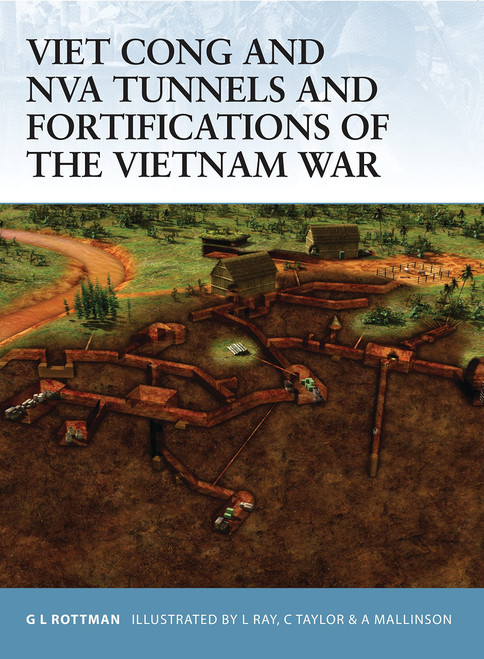Product Description
In 1965, soon after the first US combat troops had arrived in Vietnam, it was realized that in some areas the Viet Cong had developed vast tunnel complexes in which to hide from the enemy. It was long known that such complexes existed, but it was not realized just how extensive they were in some areas, how important they were to the Viet Cong, and how difficult it was to detect and neutralize them.
Most complexes were not nearly as developed and extensive as the famous tunnels of Cu Chi, but nonetheless they caused difficulties for Free World Forces. Tunnels served as hiding places for soldiers, weapons, ammunition, food, and supplies and negated the purpose of search and destroy missions intended to root out the Viet Cong. Once the Free World Forces had "cleared" the area the Viet Cong emerged from their tunnels and continued their activities.
It did little good to learn how to detect tunnel entrances and air holes and not ferret out the enemy. Someone had to go in and get them. Not only that but the extent of the tunnel complexes needed to be discovered, weapons, munitions, supplies, and documents had to be recovered or destroyed, and the tunnels themselves had to be destroyed or neutralized to prevent their continued use.
At first infantrymen volunteered to enter the tunnels armed with only pistols and flashlights - the "tunnel runners" were born, known to the Australians as "tunnel ferrets."
Starting as an ad hoc force of infantrymen, combat engineers and chemical troops, it was not long before units were "formalized" as "tunnel exploration personnel" and 4-6-man"tunnel exploitation and denial teams" were created. They came to be known simply as "tunnel rats" with the unofficial motto, Non Gratum Anus Rodentum--"Not Worth a Rat's Ass."
This title will be based on the personal accounts of those who served in this unique role, and will describe the specialist training and equipment, not to mention the tactics and combat experiences, of those who fought an underground war against the Viet Cong in Vietnam.





